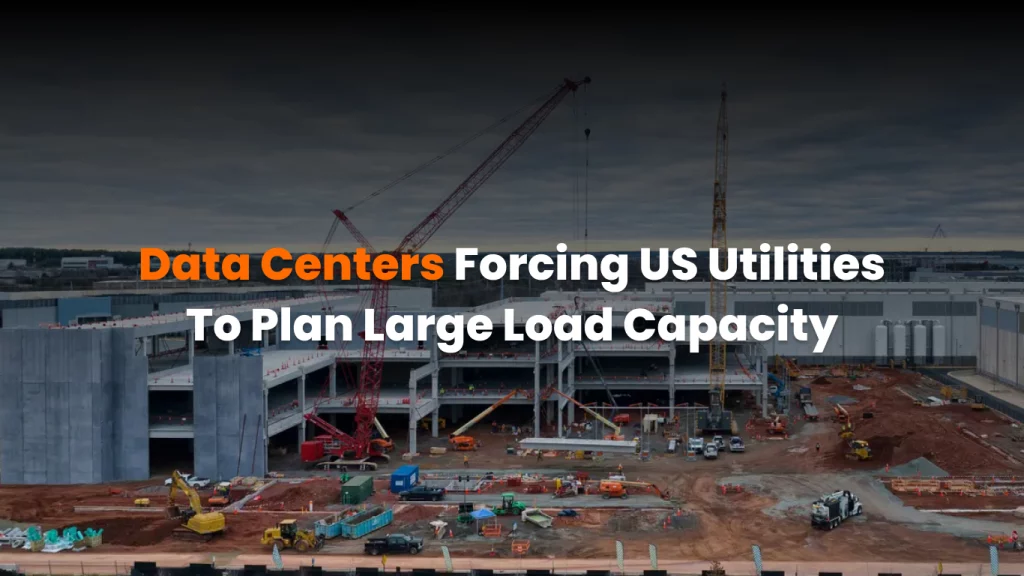The Future of Large Load Capacity Growth in the United States: Insights from Wood Mackenzie
In a recently released report by Wood Mackenzie, the growth trajectory of large load capacity in the United States has been analyzed, shedding light on how utilities are preparing to meet the demand of modern energy consumers. With 116 gigawatts (GW) of large load capacity either committed or under construction, utilities are poised for significant growth that equates to approximately 15.5% of the current U.S. peak demand. The data further suggests that when factoring in projects in advanced discussions or near-term forecasts, the total growth could reach an impressive 147 GW, representing 20% of the nation’s peak energy needs.
A Decade of Dramatic Change
The report, which we will delve into further, indicates that a substantial portion of this new energy capacity is expected to come online within this decade. Specifically, 60 GW is projected to be operational by 2030, corresponding to 8% of the current U.S. peak demand. By 2035, expectations rise to 93 GW being in operation, after which the pipeline for additional capacity appears limited. This rapid development emphasizes a significant shift in how energy demands are shaped, reflecting the increasing reliance on industries like data centers and extensive manufacturing.
Utilities Under Pressure
Ben Hertz-Shargel, the global head of Grid Edge at Wood Mackenzie, emphasized that the pace at which utilities are committing to large load capacity will challenge the market’s ability to supply this new demand effectively. “The market will be hard-pressed to supply this new load on that timeframe,” he cautioned, revealing potential bottlenecks in achieving these ambitious targets. The implications are profound for all energy consumers, as increasing large loads may lead to supply issues and resulting price hikes in deregulated markets.
Shifts in Project Sites
A significant finding in the report is the notable shift in the location of large load projects. Currently, a whopping 91% of the 17 GW of disclosed capacity under construction is situated in regulated markets. However, this marks a drastic change in the makeup of future projects: 54% of committed capacity not yet under construction and a staggering 65% of capacity in advanced discussions is intended for deregulated markets. This pivot suggests that electricity consumption patterns are evolving, particularly favoring regions where energy markets operate without price controls.
The Concentration of Capacity
Interestingly, nearly three-quarters of what is considered high-confidence load capacity is centered within the Electric Reliability Council of Texas (ERCOT) and the PJM Interconnection regions. These areas are becoming pivotal in the overall energy landscape, revealing the regional disparities and focuses within the U.S. energy sector. Hertz-Shargel cautions that the concentration in deregulated markets can create risks. Non-large load customers could face inadequate supply and rising costs as utilities and policymakers struggle to manage demand effectively.
Pipeline Capacity Concerns
Despite some modest increases in high-confidence capacity across utilities, the report points to a troubling trend: the share of high-confidence projects within total pipeline capacity has diminished over the last few quarters. New requests for capacity are outpacing the advancement and withdrawal of existing ones, indicating a precarious balancing act that utilities must navigate. Instead of moving toward a trend of stability and certainty regarding capacity planning, the situation appears to be regressing.
Data Center Demands
One of the critical drivers behind this uncertainty is the surge in demand from data centers. Hertz-Shargel mentions that the ramp rates for connecting data centers to the grid are considerable. The timeline for reaching contract capacity can vary widely for projects exceeding 300 MW, often exceeding four years to completion. This unpredictability presents challenges for utilities as they seek to forecast both immediate and long-term energy needs accurately.
The Role of Developers
Ultimately, Hertz-Shargel underscores that the operational timeline for data centers, how soon they will draw capacity from the grid, relies heavily on the actions of developers themselves. Those involved in creating data centers hold significant sway over when new loads begin drawing from the grid, hence influencing the energy supply landscape as a whole.
Conclusion: Future Implications
The findings from Wood Mackenzie paint a compelling picture of a rapidly evolving energy sector in the United States. As utilities brace for substantial growth in large load capacity, significant challenges loom on the horizon. From the proliferation of data centers to the shifting landscape of regulated versus deregulated markets, all stakeholders must remain vigilant. Policymakers, utilities, and consumers alike stand to be affected by these developments, making it imperative to consider proactive measures to mitigate potential supply crises and ensure that all energy consumers can access reliable and affordable electricity.
As the decade progresses and the grid prepares for increased demand, the collective response from all sectors involved will determine the success of these ambitious plans. The evolution of the energy landscape is not merely a utility issue; it encompasses broader economic, regulatory, and technological implications that necessitate a keen awareness of both current trends and future trajectories.




